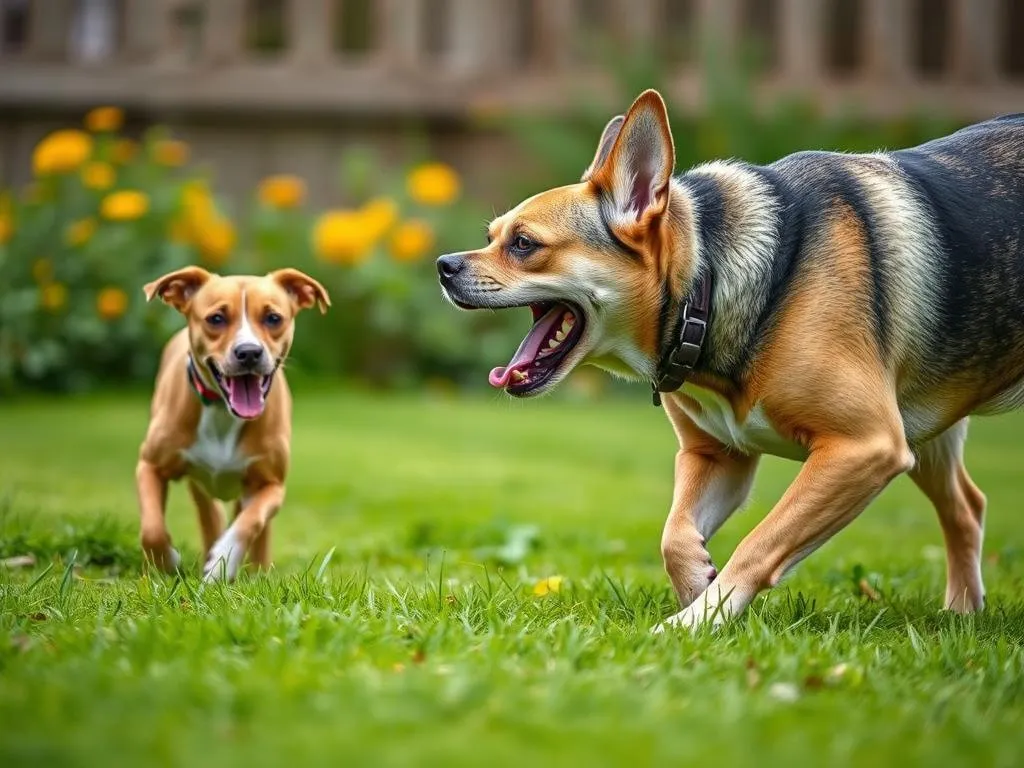
Introduction
Did you know that according to a study by the American Veterinary Medical Association, small dog breeds are often perceived as more aggressive than their larger counterparts? This surprising statistic raises questions about the nature of aggression in dogs and what factors contribute to these behaviors.
Aggression in dogs refers to a range of behaviors where a dog may threaten or attempt to harm another animal or human. These behaviors can manifest in various forms, including barking, growling, biting, and showing teeth. While many pet owners may believe that larger dogs are inherently more aggressive, the reality is more complex.
The purpose of this article is to delve into the reasons behind the perception that small dogs are more aggressive than large dogs. We will explore the roles of size, temperament, and socialization in shaping dog behavior. Our thesis posits that while size plays a part in aggression, the combination of genetics, environment, and socialization practices significantly influences how aggression is expressed across different breeds.
Understanding Dog Aggression
Definition of Aggression
Understanding aggression in dogs requires recognizing that it can stem from various motivations. Here are some common types of aggression:
- Fear-based aggression: Occurs when a dog feels threatened and reacts defensively.
- Territorial aggression: Manifested when a dog perceives an intrusion into its space.
- Possessive aggression: Arises when a dog feels its possessions (toys, food) are threatened.
- Redirected aggression: Happens when a dog cannot reach the source of its frustration and directs aggression toward another target.
Symptoms of aggressive behavior in dogs may include barking, growling, showing teeth, snapping, and even biting. Understanding these signs is critical for dog owners to manage their pets effectively.
Factors Influencing Dog Aggression
Several factors contribute to aggression in dogs, including:
- Genetics: Some breeds have predispositions toward certain aggressive behaviors.
- Environment: A dog’s upbringing, social interactions, and living conditions can heavily influence behavior.
- Socialization: Early exposure to various people, animals, and environments can help mitigate aggressive tendencies.
Size and Dog Behavior
Perceptions of Small vs. Large Dogs
Societal attitudes toward small dogs often differ significantly from those regarding large dogs. Many people view small dogs as “cute” or “adorable,” leading to a perception that their aggressive behaviors are less serious. This can contribute to a dismissive attitude toward their aggression compared to larger breeds, which are often viewed as more threatening.
Stereotypes surrounding small dogs often include notions of them being “yappy” or overly protective, which may exacerbate their aggressive behaviors. These stereotypes can create a cycle where small dogs are not taken seriously when displaying aggression, potentially leading to a lack of appropriate training or socialization.
Biological and Psychological Factors
Biological and psychological factors also play a crucial role in the behavior of small dogs. For example, smaller breeds tend to experience higher levels of fear and anxiety, which can trigger aggressive responses.
The fight or flight response in smaller dogs may manifest differently compared to larger breeds. Due to their size, small dogs often feel threatened more easily, leading them to react aggressively as a defense mechanism. Additionally, hormonal influences and brain chemistry can affect temperament, with certain breeds exhibiting more pronounced aggressive tendencies.
Socialization and Training
Importance of Early Socialization
Early socialization is essential in determining whether a dog will develop aggressive behaviors. During the first few months of a dog’s life, they undergo critical periods of social development. Lack of exposure during this time can result in a small dog becoming fearful or aggressive towards unfamiliar situations, people, or animals later in life.
Socialization helps small dogs learn appropriate responses to various stimuli, reducing the likelihood of aggression. Without proper socialization, small dogs may become overly protective or fearful, leading to aggressive displays.
Training Techniques
Training plays a significant role in managing aggression in small dogs. Positive reinforcement techniques, such as rewarding good behavior, are often more effective than negative reinforcement. Training strategies should focus on building confidence and reducing fear, which can help mitigate aggressive tendencies.
Common training mistakes to avoid include:
- Ignoring aggressive behavior in small dogs because of their size.
- Using punishment-based methods that can increase fear and anxiety.
- Failing to provide consistent training and reinforcement.
Behavioral Comparisons Between Small and Large Dogs
Common Aggressive Behaviors in Small Dogs
Small dogs often exhibit various aggressive behaviors, including:
- Barking: Excessive barking can be a warning sign of aggression, especially if it is accompanied by growling or lunging.
- Growling: Growling is a clear signal that a dog feels threatened or is uncomfortable with a situation.
- Snapping: This behavior can indicate fear or a defensive posture, especially in smaller breeds.
One case example involves a Chihuahua that would bark and snap at visitors, demonstrating possessive aggression over its owner. In this situation, the dog’s aggression stemmed from fear and insecurity, leading to aggressive displays when feeling threatened.
Aggressive Behaviors in Large Dogs
While large dogs can also display aggressive behaviors, the triggers may differ. Large breeds often exhibit aggression in situations involving territorial defense or protective instincts. For instance, a German Shepherd may growl and stand its ground if it perceives an intruder entering its yard.
Case examples of large dog aggression often involve scenarios where the dog feels justified in its actions, such as guarding property or family members. The aggression is often perceived as more serious due to the dog’s size and strength.
Misinterpretation of Behavior
One of the critical issues in understanding why small dogs are more aggressive than large dogs is the misinterpretation of behavior. Small dogs may exhibit behaviors that are overlooked or dismissed because of their size. For example, a tiny dog that barks ferociously may be perceived as “cute,” while a similar-sized bark from a large dog may be seen as a serious threat.
Body language and communication also play significant roles in how aggression is perceived. Small dogs may express discomfort or fear through barking, but their size can lead to a lack of recognition of these warning signs, resulting in increased aggressive behavior.
Addressing Aggression in Small Dogs
Recognizing Warning Signs
Being able to identify early signs of aggression is crucial for dog owners. Warning signs may include:
- Stiff body posture
- Ears pinned back
- Tail held high or low
- Lip licking or yawning as a sign of stress
Monitoring these behaviors can help owners address aggression before it escalates.
Strategies for Managing Aggression
Managing aggression in small dogs can involve various strategies:
- Professional Help: Seeking guidance from dog trainers or behaviorists can provide tailored advice and support.
- Home-based Techniques: Implementing techniques such as desensitization and counter-conditioning can help small dogs manage anxiety and aggression.
- Ongoing Training: Continued training and reinforcement are essential for maintaining positive behavior in small dogs.
Conclusion
Recap of Key Points
In summary, understanding why small dogs are more aggressive than large dogs involves a multifaceted approach. From genetics and environment to socialization and training, many factors contribute to the aggressive behaviors observed in small breeds.
Differences in behavior between small and large dogs often stem from societal perceptions and misunderstandings of aggression, leading to differing treatment and management of these behaviors.
Final Thoughts
As dog owners, it is vital to recognize that individual behavior varies from dog to dog, regardless of size. Understanding the factors that contribute to aggression can help foster more responsible dog ownership and ensure that all dogs, regardless of their size, receive the care, training, and socialization they need to thrive.









